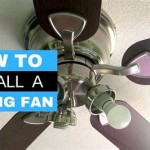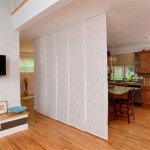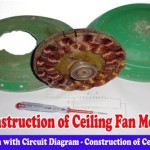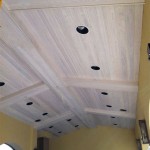Common Ceiling Fan Problems In English Rooms America
Ceiling fans are a ubiquitous feature in many American homes, particularly in English-style rooms known for their classic and elegant design. They provide both aesthetic appeal and functional benefits, aiding in air circulation and temperature regulation. However, like any mechanical device, ceiling fans are prone to developing problems over time. Addressing these issues promptly is crucial for maintaining optimal performance, preventing further damage, and ensuring the safety of the occupants. This article explores common ceiling fan problems encountered in American homes, focusing on those frequently found in English rooms, and provides an overview of potential causes and solutions. Understanding these issues empowers homeowners to troubleshoot minor problems and recognize when professional assistance is required.
The prevalence of ceiling fans in English rooms often stems from a desire to maintain a comfortable and inviting atmosphere. These rooms, characterized by their emphasis on natural light, cozy furnishings, and often featuring fireplaces, can benefit significantly from the added air circulation provided by a ceiling fan. However, the specific characteristics of English rooms, such as higher ceilings or ornate detailing, can sometimes exacerbate certain types of ceiling fan problems. Regular maintenance and a proactive approach to addressing issues are essential for ensuring the longevity and efficacy of the ceiling fan in these settings.
The type of ceiling fan installed in an English room can also influence the likelihood of certain problems. Older models, while aesthetically appealing to some, may lack the efficiency and durability of newer fans. Furthermore, the installation quality significantly impacts the fan's performance and lifespan. Improper mounting, wiring, or balancing can lead to a cascade of problems down the line. Therefore, understanding the specific characteristics of the ceiling fan and its installation is paramount in diagnosing and resolving common issues.
Wobbling and Unbalanced Blades
One of the most common complaints regarding ceiling fans is wobbling. A wobbling ceiling fan is not only annoying but can also pose a safety hazard if left unaddressed. The constant shaking can loosen the mounting hardware, potentially leading to the fan falling from the ceiling. Several factors can contribute to a wobbling ceiling fan. One of the most frequent causes is unbalanced blades. Over time, the blades can become warped or damaged, leading to uneven weight distribution. This imbalance causes the fan to wobble as it rotates.
Another potential cause of wobbling is loose blade screws. The screws that attach the blades to the motor housing can loosen over time due to vibration. This looseness allows the blades to move independently, creating an imbalance and causing the fan to wobble. Regularly checking and tightening these screws is a crucial part of ceiling fan maintenance. Improper installation can also contribute to wobbling. If the mounting bracket is not securely attached to the ceiling joist or if the fan is not properly centered, it can wobble even if the blades are perfectly balanced.
Addressing a wobbling ceiling fan often involves a process of elimination. First, inspect the blades for any signs of damage or warping. If a blade is visibly damaged, it should be replaced. Next, tighten all the blade screws securely. If tightening the screws doesn't resolve the issue, try using a balancing kit. These kits typically include small weights that can be attached to the blades to correct any imbalance. Follow the instructions provided with the kit to determine the optimal placement of the weights. In cases where the wobbling is due to an installation issue, it may be necessary to re-mount the fan, ensuring that the mounting bracket is securely attached to the ceiling joist and that the fan is properly centered.
In English rooms, where ceilings can often be higher, the wobbling may be more pronounced and potentially disorienting due to the increased distance from the occupant. Paying close attention to the quality of the installation and regularly checking for any signs of imbalance are crucial for maintaining a comfortable and safe environment.
Motor Problems and Electrical Issues
The motor is the heart of the ceiling fan, and any problems with the motor can severely impact the fan's performance. Common motor issues include humming noises, slow or erratic speed, and complete failure to start. These problems can stem from a variety of causes, including worn-out bearings, faulty capacitors, and damaged wiring. Humming noises often indicate that the motor's bearings are dry or damaged. Over time, the lubricant in the bearings can dry out, causing friction and noise. Replacing the bearings can often resolve this issue, but it may be more cost-effective to replace the entire motor in some cases.
A faulty capacitor can also cause motor problems. The capacitor is responsible for providing the initial surge of power needed to start the motor. If the capacitor is weak or damaged, the motor may struggle to start or run at the correct speed. Replacing the capacitor is a relatively simple and inexpensive repair that can often restore the fan's performance. Electrical issues, such as loose wiring connections or damaged wires, can also cause motor problems. These issues can interrupt the flow of electricity to the motor, causing it to malfunction or stop working altogether.
Diagnosing motor problems often requires a multimeter to test the voltage and continuity of the electrical components. If you are not comfortable working with electricity, it is best to consult a qualified electrician. They can safely diagnose the problem and recommend the appropriate repair. When dealing with electrical issues, it is crucial to turn off the power to the ceiling fan at the circuit breaker before attempting any repairs. This will prevent electric shock and ensure your safety. In older homes, particularly those with original wiring, electrical issues might be more prevalent due to aging insulation and connections. Careful inspection and maintenance are crucial in these situations.
In English rooms, where intricate light fixtures are often integrated with the ceiling fan, electrical problems can become more complex. A professional electrician with experience working on combination fan and light fixtures is crucial for properly diagnosing and resolving any issues without damaging the surrounding structure or delicate components.
Light Fixture Malfunctions
Many ceiling fans include integrated light fixtures, providing both illumination and air circulation. However, light fixture malfunctions are a common source of frustration for homeowners. These malfunctions can range from flickering lights to complete failure of the light fixture. Several factors can contribute to these problems, including burnt-out bulbs, loose connections, and faulty wiring.
A burnt-out bulb is the most obvious and easily addressed cause of light fixture malfunction. Before investigating further, always check the bulb and replace it if necessary. Loose connections are another common issue. The wires connecting the light fixture to the fan motor and the power source can loosen over time due to vibration. This looseness can interrupt the flow of electricity, causing the lights to flicker or fail to work altogether. Tightening these connections can often resolve the problem. Faulty wiring can also cause light fixture malfunctions. Damaged or frayed wires can create short circuits or interrupt the flow of electricity. In such cases, it is necessary to replace the damaged wiring.
In some cases, the light fixture malfunction may be due to a faulty light switch or dimmer switch. If the switch is not functioning properly, it may not be sending the correct voltage to the light fixture. Replacing the switch can often resolve this issue. When troubleshooting light fixture malfunctions, it is crucial to turn off the power to the ceiling fan at the circuit breaker before attempting any repairs. This will prevent electric shock and ensure your safety. Also, be mindful of the type of bulbs used in the fixture. Using the wrong type or wattage can damage the fixture or create a fire hazard. Always refer to the manufacturer's instructions for the recommended bulb type and wattage.
English rooms often feature specific lighting aesthetics, such as chandeliers or sconces, which may influence the type of light fixture integrated into the ceiling fan. Ensuring compatibility between the fan's light fixture and the overall room lighting design is crucial. Furthermore, the use of dimmer switches, while common in English rooms to create ambiance, can sometimes contribute to flickering or buzzing issues, especially with older or incompatible light fixtures. Proper selection and installation of dimmer switches are essential for avoiding these problems.
Regular inspections of ceiling fans, particularly in rooms with specific characteristics like English rooms, are crucial for identifying and addressing potential problems early on. Early detection and resolution of these issues can prevent more significant and costly repairs in the future. A proactive approach to maintenance ensures the continued functionality, safety, and aesthetic appeal of ceiling fans in American homes.

Ceiling Fan Spinning Slow Repair Easy Diy Fix

How To Replace An Old Ceiling Fan Full Installation Wiring Guide Builds By Maz

Ceiling Fan Wikipedia

How To Replace A Ceiling Fan Ask This Old House

Ceiling Fan Sd Problem Solved How To Repalce The Capacitor

Improving Ventilation In Your Home

Ceiling Fan Rpm Meaning Factors Affecting Sped Crompton

How To Replace A Capacitor In Ceiling Fan 3 Ways

Fan Wikipedia

What Are Standard Ceiling Heights
Related Posts








